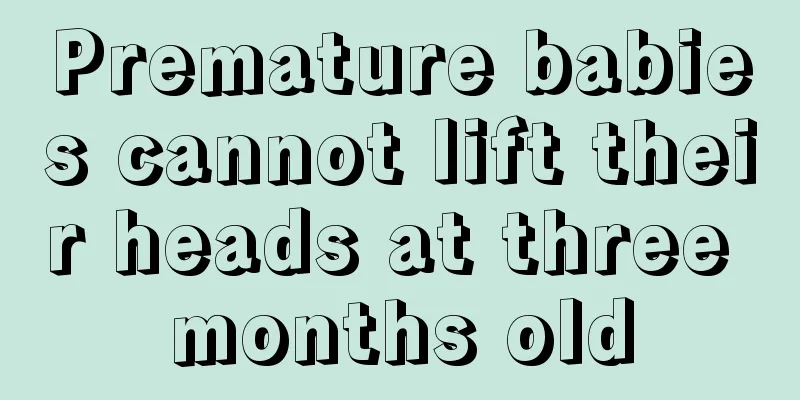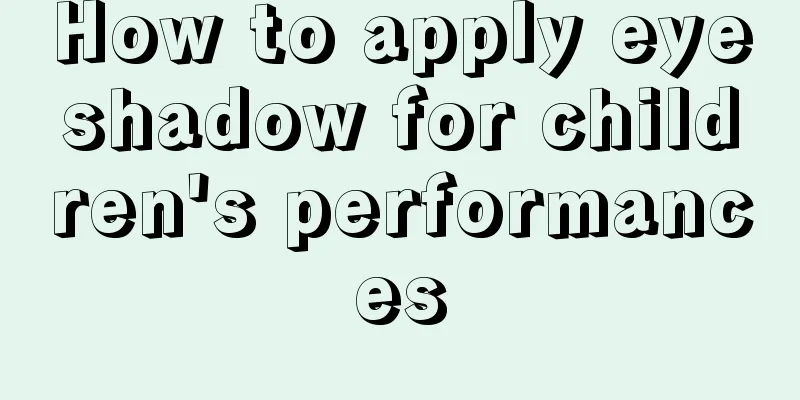Premature babies cannot lift their heads at three months old

|
If a premature baby still cannot lift his head after three months of birth, you must be vigilant at this time. This may be because the child has brain damage and brain poor development. We know that the incidence of cerebral palsy in premature babies is very high, and premature birth is one of the most important causes of cerebral palsy. If a child still cannot lift his head after three months of birth, he should be examined and treated in time. For a disease like cerebral palsy, the earlier the treatment, the better the effect. Premature babies cannot lift their heads at three months old If the disease is not discovered and treated early due to parents' lack of attention, the child may suffer from lifelong limb disability. In this regard, experts said that children with cerebral palsy will have damaged neurological functions after birth, and will have symptoms such as being easily frightened, crying and restless, having poor sleep, difficulty breastfeeding, moaning, having umbilical hernias, and stiffening, which can sometimes be difficult to distinguish from normal children. However, if a child has some of the above-mentioned high-risk factors in the perinatal period, we should be highly vigilant. Early symptoms of cerebral palsy in premature infants 1. He cannot lift his head at three months, cannot roll over at six months, and cannot sit at eight months. 2. There is no sound when crying or the crying voice is weak, low and straight. 3. The hands and feet are not coordinated during exercise, and unilateral movements are more common. At 4 months old, he could not put his hands to his mouth, and when lying on his stomach at the head of the bed, his mouth and nose were completely pressed against the bed. 4. Weak sucking, difficulty swallowing, frequent choking, choking, and vomiting during feeding. 5. Unable to distinguish the direction of sound. You cannot move left and right to follow the sound, but turn your body to follow the sound. 6. Not very sensitive to color and light, and eyes are dull. 7. Unable to open legs when peeing. 8. There is no eye contact with the parents and the child often suffers from convulsions. 9. Sleeping too long or not sleeping at all, not crying or laughing. Early symptoms of cerebral palsy in premature infants, identification of the severity and classification of cerebral palsy from the perspective of intelligence, motor skills, emotions, etc. Symptoms of cerebral palsy 1. Body weakness and decreased spontaneous movements are symptoms of hypotonia and can be seen in one month. If it persists for more than 4 months, it may be diagnosed as severe brain damage, mental retardation or muscle system disease. 2. The body becomes stiff. This is a symptom of hypertonia and can be seen in one month. If it persists for more than 4 months, it can be diagnosed as cerebral palsy. 3. Slow reaction and no response when the name is called are early manifestations of mental retardation. It is generally believed that slow reaction at 4 months and no response when the name is called at 6 months can be diagnosed as mental retardation. 4. Abnormal head circumference: Head circumference is an objective indicator of the morphological development of the brain. Children with brain damage often have abnormal head circumference. 5. Poor weight gain and inability to breastfeed. 6. Fixed posture is often caused by abnormal muscle tone due to brain damage, such as opisthotonos, frog position, inverted U-shaped posture, etc. It can be seen one month after birth. 7. Not smiling: If a child cannot smile at 2 months or laugh out loud at 4 months, he or she may be diagnosed with mental retardation. 8. Fist: If the baby cannot open his fist after 4 months, or the thumb is adducted, especially on one upper limb. |
<<: How long does it take for the umbilical cord of a premature baby to fall off?
>>: What to do if premature babies have phlegm in their throats
Recommend
What to do if your child coughs up white phlegm
If a child coughs, be sure to find out the cause ...
What does a child eat that affects his or her height? These foods will affect your child's growth
With the improvement of living and dietary standa...
What should I do if my child has anorexia?
What should I do if my child has anorexia and pic...
Can urticaria be exposed to wind?
There is a saying among the people that children ...
Baby essentials list
If the baby is too young, it is definitely not ap...
What should a 4 month old baby be able to do?
Babies have strong learning abilities. Once an in...
Baby's stool occult blood plus sign
The baby's physical health should be a concer...
How many months is it normal for babies to start growing teeth?
It takes a certain amount of time for babies to g...
How to choose a baby pillow
When choosing a pillow, you must pay attention to...
What foods are good for children with liver fire?
If a child has excessive liver fire, parents shou...
Pay attention to sticky baby stools
Many times parents will find that their baby'...
Why does the child lose his breath when he cries?
It is very common for children to cry in daily li...
How to deal with intestinal gas in babies?
It is quite common for babies to have intestinal ...
What to do if your child has poor eyesight
Children's eyesight is actually a concern for...
Side effects of pine pollen for babies
Pine pollen is familiar to many people. It can be...









